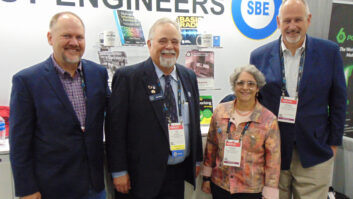Terrestrial Radio’s Future Relies on the Leveraging of Its Unique Attributes
Like all traditional media, radio is being threatened by new competition. The market for audio services is rife with next-gen services, but radio has weathered such onslaughts on numerous occasions in its long history.
What makes this time different is the sheer number of potential competitors simultaneously – and we haven’t seen the last of them yet. Complicating this further is the timing, happening just as radio deploys its own next-gen improvements.
Outflanked?
There may be a sort of safety in numbers here. The very fact that so many separate start-ups are challenging radio for its listeners’ eartime may be a blessing in disguise. This is the so-called “solution by dilution,” by which no new entrant can gain critical mass, and they all eventually go away, leaving radio essentially as it was in terms of market share.
Yet counting on this possibility is not a prudent course for broadcasters. Instead, radio should move proactively to ensure such an outcome by strengthening the areas that are most difficult for newcomers to challenge.
Talking to existing listeners – either via focus groups, or by more informal methods – is a great way to understand these strengths. While the finer points of this analysis may differ among stations, certain broad strokes are likely to apply to the entirety of terrestrial radio. Applying these lessons well may mean the difference between continued success and eventual serious decline or failure in the years ahead.
Now hear this
One of these general traits is what I call “Now value.” It is the key differentiator between radio and most other audio sources available today, in that radio is listened to with special consideration of the current time. Even it is produced otherwise – recorded or voice-tracked in advance, for example – radio is delivered as it is heard. This has been considered an encumbrance, especially in an age that so values on-demand media, but it will actually remain an asset, at least for some (arguable, many) listeners, some (arguably, most) of the time.
Sure, it’s great to program your own playlist on a personal music player; but if you ever want to feel connected to the rest of the planet by an audio source, radio is the way to do it. Even a broadcast-delivered jukebox music service with recorded liners as its only continuity has more of a sense of connection to other humans than does a local storage device. This is the basis of “Now value” – the sense that something created by others is happening at this very moment, and the listener is hearing it as it happens.
Add a DJ’s voice, whether live or not, and you gain even more credible “now-ness.” Punctuating the service with news (even recorded announcements of upcoming events) adds more still. Any reference to time helps, and of course, actual live services, from morning zoos to news/talk to sportscasts, are the best of all in this respect. Every element of apparent real-time creation of the service increases its Now value, and gives listeners a stronger connection to the pulse of life outside themselves.
Any radio service – which in the United States today includes those delivered both terrestrially and by satellite – can provide this value. Even the most hardened iPod user cannot fully abstain from such services, and will on occasion still turn to them when a connection to the outside world in real time is desired.
Hear and there
Every sound heard by a listener happens while that listener is located somewhere, at some time. The connectedness provided by Now value can be even further strengthened in some cases by adding locally specific references or information, or “Here value.”
This is something that terrestrial radio can do well practically all the time, and which has definite appeal to listeners. Politically, this is called “localism,” but that term generally refers to coverage of local issues. This is only a single component of Here value. Simple references to area venues – even in commercial messages – can provide as much Here value to a terrestrial radio service as a local news story does.
Satellite radio has recognized this, as evidenced by recent trends toward adding major-market traffic and weather. These increase both Here and Now value for these services, but terrestrial radio can do this for a wider range of content, in every market it serves. (Terrestrial radio should consider the added value of such full-time weather and traffic services, however, which could be implemented as low-bit rate supplemental audio services via IBOC.)
Connecting listeners to their world, on both macro and micro levels, is an attribute of terrestrial radio that is difficult to contest. Terrestrial broadcasters should bear this in mind as they shore up their defenses against mounting competition. Listeners may wander, but they can always come home to radio if it retains its unique appeal.












